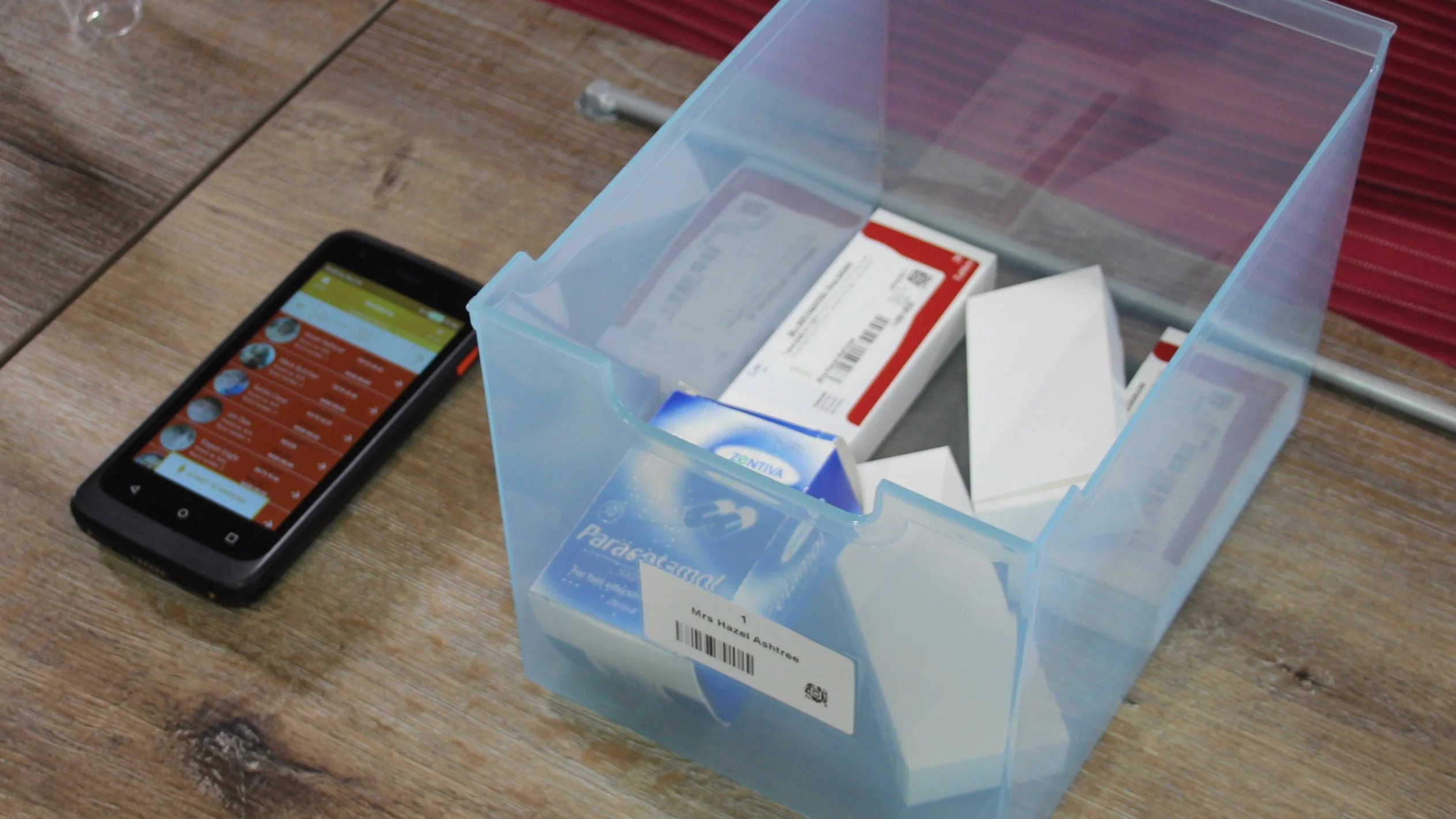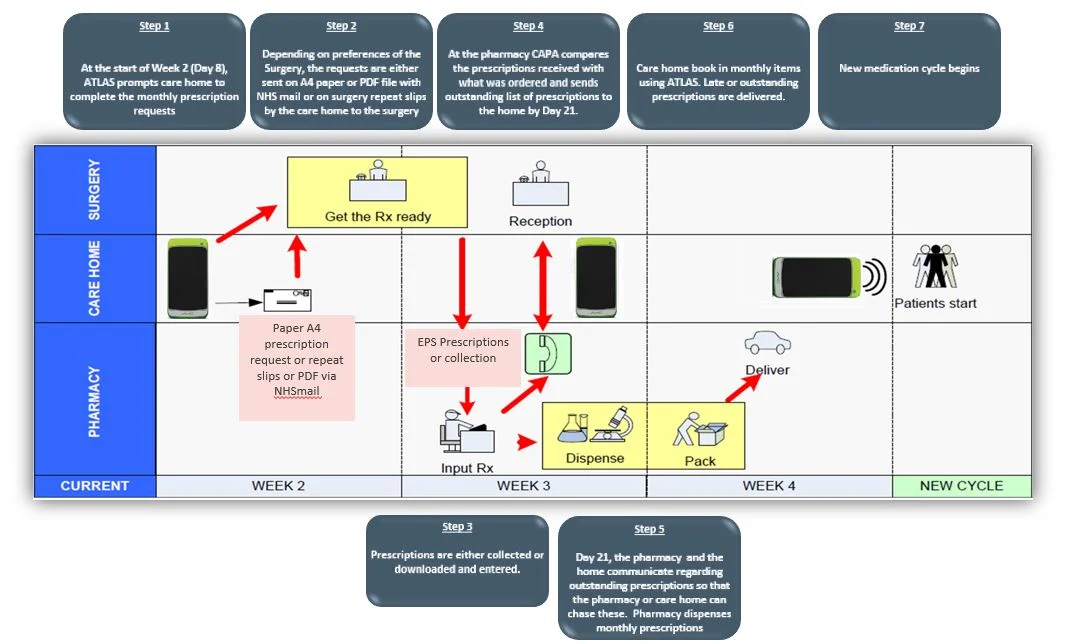Care home operators are increasingly looking for technology to improve safety, accountability and the quality of data, so we’re discussing how to choose an eMAR system

As more and more care providers embrace digitising their social care records, often the question is what is the next step? For many, that is finding a solution that can have an equally transformative effect on the quality of medications management, which can be done using an electronic medication administration record (eMAR) system. So, we’re discussing how to choose an eMAR system.
When it comes to medication management, the search for technology solutions has intensified in response to safeguarding incidents and heavy regulations around medicine. There are now several companies offering eMAR solutions, so how do you choose between them? In this blog, we’ll be looking at all the considerations for how to choose an eMAR system. It's important that when you are reviewing eMAR systems currently available, you are fully aware and able to make an informed decision.
Why are you looking for an eMAR system and what are your objectives?
The first consideration must be what the reasons are for considering an eMAR system. For example, have you been prompted to make improvements to your medication process based on feedback from recent inspections? Do you have to make a change because your pharmacy is stopping blister packs? Or do you want to invest in technology for the future? Do you want to find ways to save time, improve medication processes, increase safety? Do you already use digital care planning and now the time is right for you to digitise your medicines management process too?
In all these scenarios, it is important that you consider all the options available, rather than just the ones offered by your pharmacy supplier or the add on module to your electronic care plans. The eMAR system you choose must work for you and achieve your objectives rather than suit the pharmacy supplier or just to tick a box.
The main considerations when choosing an eMAR system
Common objectives when looking into how to choose an eMAR system are ensuring safety, increasing accountability and reducing the burden of stock control and prescription management. And of course, the eMAR system must give you all the tools you need to evidence the quality of care you are able to provide. Below, we’ll look at the answers for some of the key questions you need to ask yourself as you decide which eMAR system is best for you.
How does an eMAR system help provide safety?
Some eMAR systems claim to provide safety by virtue of being digital and eliminating the errors associated with handwriting and reading, while others claim that because they schedule and alert for medicines administration there is less risk of residents going with medicines.
Some eMAR systems have introduced the concept of barcode scanning on dispensing labels at the point of administration; the eMAR system then checks if the scanned medicine is correct for the resident at that time and if not, the system produces an alert to avoid a potential error. In this way, another level of checking is introduced.
The difference between more advanced systems comes down to the amount of information on the barcodes. Most systems simply have information relating to the resident and the medicines, but other systems, such as ATLAS eMAR, scans the barcode and provides information relating to the pack that was dispensed and can potentially even check for expiry date of medicines.
Did you know?
ATLAS eMAR was ahead of the competition as it was the first system to introduce the concept of barcode scanning on dispensing labels at the point of administration.
Another important consideration for safety is the connection between the eMAR system and the care home and the resident’s medication record at the pharmacy. If there was a true two-way connection, then changes to the resident’s therapy made at the care home, for example after a GP visit, would be automatically updated on the pharmacists’ records. Similarly, if the pharmacy dispensed a new prescription for a resident, the eMAR system would be automatically updated.
The sharing of records allows the pharmacist to check every prescription against the resident’s therapy at the care home. In this way, the pharmacist’s contribution is maximised. ATLAS eMAR is the only solution that has this true two-way link with the pharmacy dispensing system.
How does the eMAR system help improve accountability?
Typically, eMAR systems provide a date and time stamp for certain medicine related activities. If staff members use their own unique log-in details, then reports can be generated to show when and which staff has administered or not administered the medicines.
The systems for accountability will therefore only be as good as the methods they have for ensuring people only use their own log-in details and the detail of the data they collect and make available for viewing.
ATLAS eMAR insists on every user having their own unique log-in details and has an easy process for agency personnel to quickly set up and obtain log-in details. There is even a straightforward process for retrieval of details if they have been forgotten.
Not only that, but users and managers can easily see details of medicines-related activities for audit, such as:
- Missing entries
- Administration details
- Booking in
- Returns
- Stock levels
- Drug changes (including who witnessed the changes)
- Prescription requests and much more!
ATLAS eMAR also provides a list of reports that can be scheduled to be sent out to relevant individuals within the home, for example daily reports or reports that can be printed or exported as required. The ultimate in accountability functionality is the ATLAS Scorecard, which allows managers to see an “at a glance” view of the medicines management in the care home and ability to drill down to see what the issue is and what or who is responsible for it.
How do eMAR systems help with stock control?
When you’re thinking about how to choose an eMAR system, you need to look at systems that have a process for booking-in of stock and have a running stock count for each medicine. Once there is a stock count, then every time a medicine is given to a resident, the stock count is reduced by the amount that is administered.
The eMAR systems are only as good as the way they maintain the stock count; there must be processes to prevent booking in of stock more than once and processes for discarding medicines that have been refused and those that are to be returned to the pharmacy. The eMAR system must also account for medicines such as creams, inhalers, injections and nutritional supplements of which the quantity of administration is not always known.
To prevent stock running out, the eMAR system you choose must have a way of alerting to this fact in plenty of time to request prescriptions and for the pharmacy to dispense and deliver these. Ideally, the system would have functionality for placing prescription requests and having a way to track the status of the prescription from receipt at the pharmacy to the due time for delivery at the care home.
ATLAS eMAR’s process for booking in of medications is to scan the barcode on the dispensing label which then updates the stock count. Read here if you want to find out more about ATLAS eMAR’s barcode scanning feature or how ATLAS eMAR helps with stock control.
What are the other considerations when choosing an eMAR system?
When you’re thinking about how to choose an eMAR system, there are some more questions you need to ask yourself that will help you in your decision-making to pick the best system for your home your staff and your residents, such as:
How easy is it to implement?
Introducing any change in a care setting requires leadership, planning and resources. Any change affecting medicines management in care homes also needs to take into account training, medicines policies, coordination of supply of medicines and support during the initial weeks of implementation. The more user-friendly and intuitive the product, the easier the training and staff acceptance. The more detailed the implementation plan, the greater chance of success, and the more resources and support available, the less time the care home needs to make the implementation.
What hardware will be required, and is it fit for purpose?
The hardware used in care homes for medication management has to be robust as it is used many times a day, every day of the week. Sooner or later the hardware will be dropped, it will have liquids spilled on it and it will get dirty, so whatever the hardware of an eMAR system, it must be convenient and durable for the carers and nurses who use it.
ATLAS eMAR’s handheld devices, for example, are shockproof and have an antimicrobial coating and can be easily wiped down, meaning that they will withstand whatever is thrown at them in the running of a busy care home.
What if the technology goes down?
For a critical process like medication administration, you need to be able to work with the confidence that disaster recovery processes are in place on the eMAR system you choose. So, you will need to know what sort is in place in the rare event that the internet goes down, or if there is a power cut or if the hardware is damaged and can no longer function.
Will the medicines administration process take longer?
The medicines administration process with any eMAR system shouldn’t take any longer or be any shorter because the greatest proportion of time in the process is actually spent with the resident administering and observing that they have taken the medication.
ATLAS eMAR, for example, has shown that there is no difference in the time it takes to administer medications but there is an average of 65 staff hours saved per month on the whole medicine management process. In other words, while the process of physically administering the medications will remain roughly the same, overall, the process will be safer, more efficient, and therefore save you time in other areas.
Will the eMAR system help with inspections and contribute to better ratings?
Whether you are seeking to remain compliant with regulations imposed by the CQC, the Care Inspectorate or Care Inspectorate Wales, you need an eMAR system that is going to be able to not only facilitate good care outcomes for medication management but be able to evidence them.
Best practice around the management and optimisation of medications administration in care homes is crucial if you want to achieve high standards with regulatory bodies, which we cover in more detail when we discussed CQC compliance for medicines.
What about information security and GDPR?
Data breaches could lead to 4% fines of the overall turnover of a company; therefore, the information security infrastructure and mitigation of data breaches is a very important consideration when choosing an eMAR system. This needs to be at the forefront of your thinking when making a decision.
How to choose an eMAR system - making a decision
Ultimately, the best way to find out which eMAR system is best for your care setting is by doing some research and speaking to companies to find out more about the products on offer. If you want to find out more about how ATLAS eMAR is the best choice for your medication management needs, then you can book a consultation below and speak to one of our team and they will answer any question you might have and give you all the information you need to make a decision.

